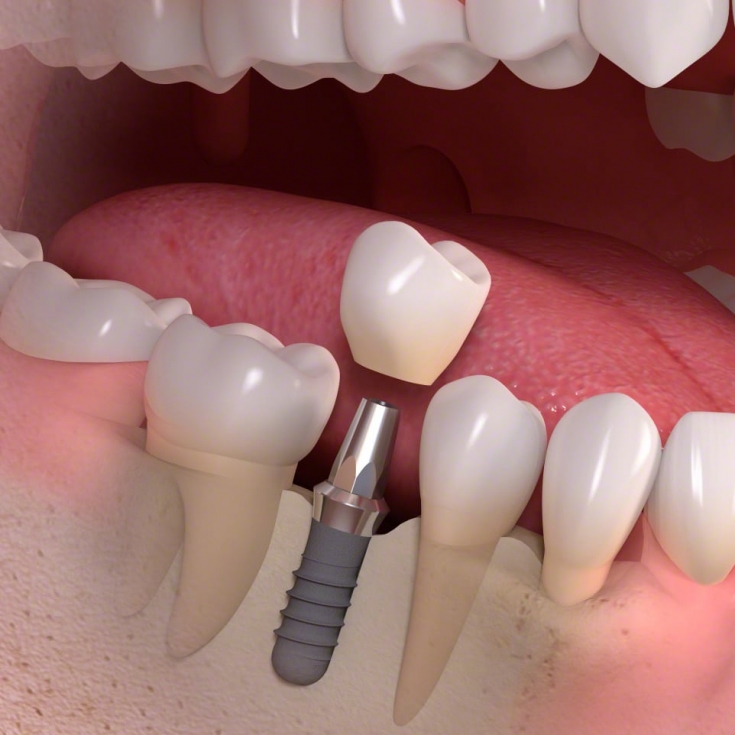One of the most unpleasant complications after dental implantation – This is peri-implantitis. It is an inflammation of the tissues surrounding the implant. The process is accompanied by pain, hyperemia and swelling of the gums, bleeding and suppuration. The reasons for the development of peri-implantitis can be both doctor's mistakes when installing the implant, and non-observance of oral hygiene by the patient after surgery. In order to cope with the inflammatory process, in some cases it is necessary to remove the implant and then, after the necessary treatment, install it again.
The most common causes of tissue inflammation during dental implantation
Peri-implantitis can develop both in the immediate postoperative period and some time after dental implantation. In the first case, the reason is technical errors during the operation, and in the second – non-observance of oral hygiene by the patient.
Among medical errors that can provoke tissue inflammation, it should be noted the violation of asepsis and antisepsis during manipulations, as well as the wrong choice and installation of the intraosseous part of the implant. The cause of peri-implantitis can also be incorrectly made crowns, due to which the periodontium is constantly injured.
The most common causes of peri-implantitis are:
• appearance of subgingival hematoma and its suppuration;
• disproportion of the size of the implant to the bone bed, due to which the mobility of the structure develops;
• excessive efforts to screw in the implant, leading to the destruction of bone tissue;
• improper suturing of the postoperative wound;
• micro gaps between implant and abutment.
Sometimes inflammation can be caused by poor quality implant alloy or poor design of the implant itself.
Most often, the cause of inflammation of the tissues around the implant is inadequate care of the teeth and prosthesis, ignoring preventive examinations by the patient.
Dental implants have certain design features that cause tartar to form and cause peri-implantitis. At risk, of course, are smokers, as well as those patients who suffer from diabetes, immune disorders, bruxism.
Symptoms of peri-implantitis and treatment of tissue inflammation near the tooth

Tissue inflammation around a dental implant can be of two types. Mucositis – This is a superficial inflammation, which is manifested by swelling of the gums and its bleeding. Peri-implant cuff hyperplasia develops. But bone resorption does not occur.
Unlike mucositis, peri-implantitis is characterized by progressive bone loss. Edema and hyperemia develop in the area of the installed implant, the gum bleeds, patients complain of pain. Gingival fistulas are formed with purulent discharge.
As tissue inflammation progresses in peri-implantitis, the implant becomes more mobile due to bone resorption and loses its function.
Symptoms of peri-implantitis can develop not only immediately after surgery, but also months later. In this case, the probability of rejection of the implant is high. Treatment is carried out in two stages. At the first stage, gingival inflammation and surgical debridement of the focus are eliminated. Peri-implant pockets are treated with an ozonized solution, laser therapy can be used. Particular attention is paid to the removal of calculus from the crown and abutment.
In case of recurrent peri-implantitis, it is often necessary to remove the implant, and then, after the treatment, to carry out re-implantation. To avoid this, the patient must be informed about the risks of peri-implantitis and the need for proper dental care.







Add a comment